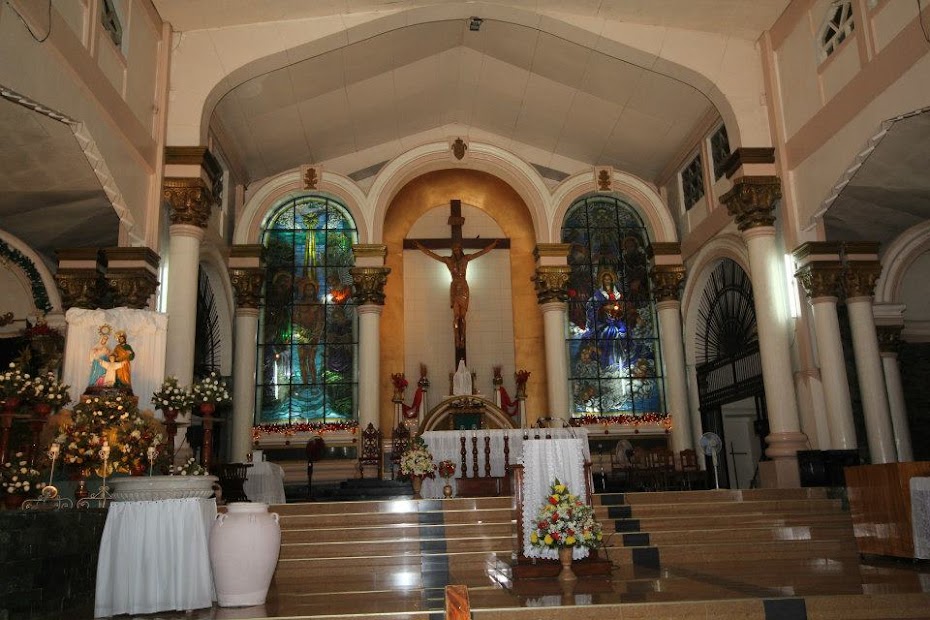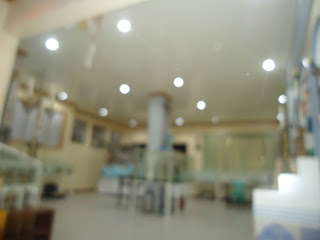DID MAGELLAN ATTEMPT TO LAND IN CALICOAN ISLET, GUIUAN, ON MARCH 16, 1521?
By Msgr. Lope C. Robredillo, SThD
A few days ago, someone messaged me if it was true that Ferdinand Magellan tried to land in Calicoan, an islet at the tip of Samar island, on March 16, 1521. I flatly said NO; he did not. Of course, I respect and even appreciate such a debatable speculation in Samar historiography; I surmise it is a product of research. But I beg to disagree. And in this difference of opinion, I would like to propose a more exact location where the Great Explorer first wished to beach in what is now the Philippines.
To begin with, there are 6 best known primary sources for the Magellanic expedition: [1] “Relación de un portugues, compañero de Odoarte Barbosa, que fué en la nao Victoria el año de 1519,” by an Anonymous Portuguese; [2] “Navegación y viaje que hizo Fernando de Magallanes desde Sevilla para el Maluco en el año de 1519” by a Genoese Pilot; [3] “Libro que trata del descubrimiento y principio del estrecho que se llama de Magallanes” by Ginés de Mafra; [4] “A viagem de Fernão de Magalhães por uma Presencial” by Martín Lopez de Ayamento; [5] “Diario ó derrotero del viaje de Magallanes desde el cabo de San Agustin en el Brasil hasta el regreso a España de la nao Victoria” by Francisco Albo; and [6] “Primo viaggio intorno al mondo” by Antonio Pigafetta.
None of them, however, mentions Calicoan, and none of them has any statement, unless distorted, from which one can deduce that Magellan did make an attempt in that islet. Maximilianus Transylvanus, who wrote “Relacion escrita por Maximiliano Transilvano de cómo y por quién y en qué tiempo fueron descubiertas y halladas las islas Molucas, donde es el propio nascimiento de la especiería, las cuales caen en la conquista y marcacion de la Corona Real de Espaňa. E divídese esta relacion en viente parráfos principales,” on the basis of the testimonies of Sebastian del Cano and other survivors, does not give a iota of indication about the Calicoan claim, either.
Some of these documents, however, can help determine the location of his intended place of landing. The basic information comes, first of all, from Antonio Pigafetta in his “Primo viaggio.” In his Medieval Italian, Lombardo relates: “Sabato a sedize de marso 1521 dessemo neLa aurora soura vna tera alta logi trecento legue delle ysolle de li latroni laqªL e ysola et se chiamma Zamal.” Here’s an English translation: “At dawn, on Saturday, March sixteen, 1521, we came upon a high land at a distance of three hundred leguas from the land of Latroni—an island named Zamal” (Robinson’s). Clearly, Pigafetta had in mind the big island of Samar, not the islet of Calicoan.
But where in Samar? In his “Derrotero,” Francisco Albo provides additional data: “Los 16 del dicho vimos tierra y fuimos a ella al Noroeste, y vimos que salía la tierra al Norte, y había en ella muchos bajíos y tomamos otro bordo del Sur, y fuimos a dar en otra isla pequeña y allí surgimos, y esto fue el mismo día, y esta isla se llama Suluan, y la primera se llama Yunagan. Aquí vimos unas canoas y fuimos a ellas, y ellas huyeron, y esta isla está en 9º2/3 de la parte del Norte.” Here’s an English translation: “On the 16th (March) we saw land, and went towards it to the N.W., and we saw that the land trended north, and that there were many shoals near it, and we took another tack to the south, and we fell in with another small island, and there we anchored: and this was the same day, and this island is called Suluano [sic], and the first one is named Yunuguan [sic]; and here we saw some canoes, and we went to them, and they fled; and this island is in 9⅔°N. latitude” (Stanley’s).
In Albo’s account, Yunagan cannot be Calicoan, since it is clearly referred to as the first island they saw; it could only be the big island of Samar. And all commentators of Albo and Pigafetta I know of identify Yunagan with the Samar of Pigafetta. If Yunagan were Calicoan, how could Albo have characterized the island as having so many shoals? Where is the high land in Calicoan that the explorers saw at a distance? In sailing south, neither Pigafetta nor Albo narrates that they attempted to beach several times along the way until they reached Suluan island. Thus, to claim that Magellan ventured to land in Calicoan would be no different from to claim that he did so in Matarinao, Burac and Asgad in Salcedo or even in Dumpao beach, Sapao in Guiuan!
But, here is an interesting bit of detail. Take note that Suluan, according to Albo, is located at 9⅔°N. latitude. When Magellan left Ladrones (Guam) on March 9, they sailed to the northwest at 12° latitude, and on March 14, at 10⅔° latitude. When they approached Samar, however, the Genoese Pilot in “Navegación y viaje que hizo Fernando de Magallanes desde Sevilla para el Maluco en el año de 1519” observed that they were at 11°N. latitude.
In Spanish cartography, where is Guiuan to be found? Neither the Pilot nor Albo gives an estimate of the location of Guiuan, but Felix Huerta says in his Estado geográfico, typográfico, estadístico-histórico de la Santa Apostólica de S. Gregorio Magno, etc. that Guiuan is located at 10°35 latitude. What about Calicoan? It is probably situated at 10°28 latitude or thereabouts. If, in the Middle Ages, 1 latitude is around 111 kilometers, one can easily estimate that Calicoan island is really far removed from the 11°N latitude where Magellan attempted to land. In other words, Magellan did not attempt to land in Calicoan islet; this is too far south.
This bring us to the question: What place in Samar island is located at 11°N. latitude? According to Huerta, it is Hernani: “[Hernani] se halla situado á los 11°15” de latitud, en terreno llano, sobre el costa E. de la isla.” That is to say, Hernani is situated at 11°15” latitude, on a flat terrain on the east coast of the island. In view of this, it would be more correct to say that Magellan attempted to land in the vicinity of the old town of Hernani, because this town was located at 11°15” latitude. It cannot be Lanang (Llorente), either, because this town lies at 11°32’40” latitude; it is too far north.
Which is why, in footnote 71, Chapter 1, of my book, Homonhon Island: The Correct Site of the First Mass in the Philippines, I made the following comment in relation to the word “Zamal” in Pigafetta’s account: “[Zamal] refers to Samar or, more precisely, Ibabao, and the explorers could have seen from a distance the mountain peaks of Mt. Apoy, Mt. Mactaon and Mt. Bihag. In his log-book, ‘Diario ó derrotero,’ in Fernandez de Navarette, Coleccion de los viages y descubrimientos, 220, Francisco Albo calls the island Yunagan that extended north and had many shallows. In this derrotero, it appears that, having gone toward Ibabao to the northwest, Magellan tried to go ashore—this information is not found in Pigafetta.
“The exact place where the attempt had been made is undoubtedly in the vicinity of Hernani (Nag-as), since the Genoese Pilot, in his Navegación y viaje que hizo Fernando de Magallanes desde de Sevilla para el Maluco en el año de 1519, in Medina, Documentos Inéditos, 2:404, notes that on the day of March 16 when the venture was undertaken, the Armada was at 11ᴼN latitude. However, on account of the dangerous shoals that made landing impossible, Magellan decided to navigate southward, obviously passing Sungi point in Candulom island. Although the circumnavigators saw some boats from this islet, they never encountered any natives because the latter fled. The Captain-General anchored off Suluan for the night.”
May I end this brief essay with a suggestion. If I were a resident or an official of the municipality of Hernani, Eastern Samar, I would propose to the civil or ecclesiastical authorities in the municipality to place a marker in the ruins of the old Church of Hernani to commemorate the attempt of Ferdinand Magellan to go ashore; the claim of Calicoan island cannot stand closer historical scrutiny, whereas that of Hernani can. This way, Hernani can demonstrate that it is really a part of the 500th international celebration of the Magellan-Elcano circumnavigation of the world.


























